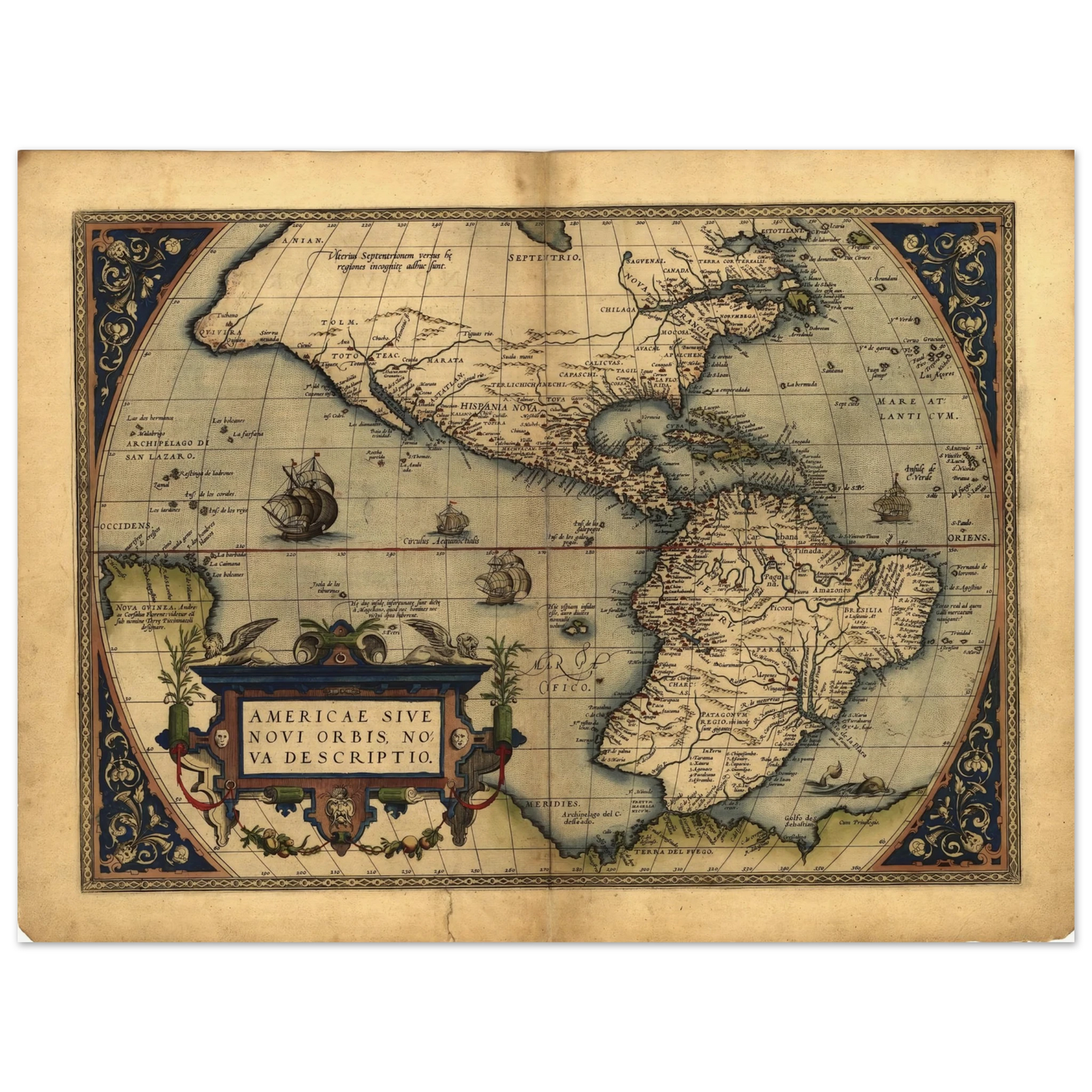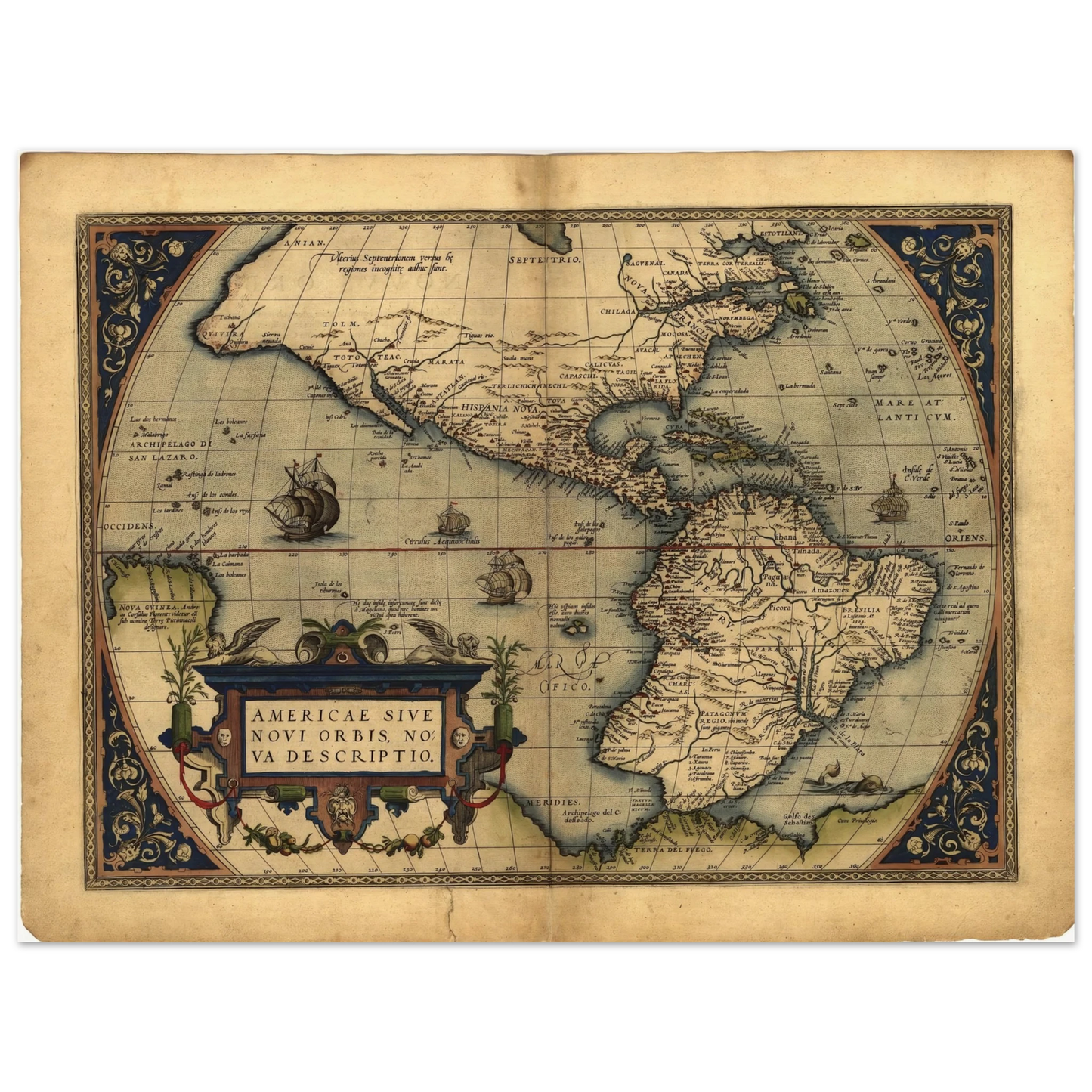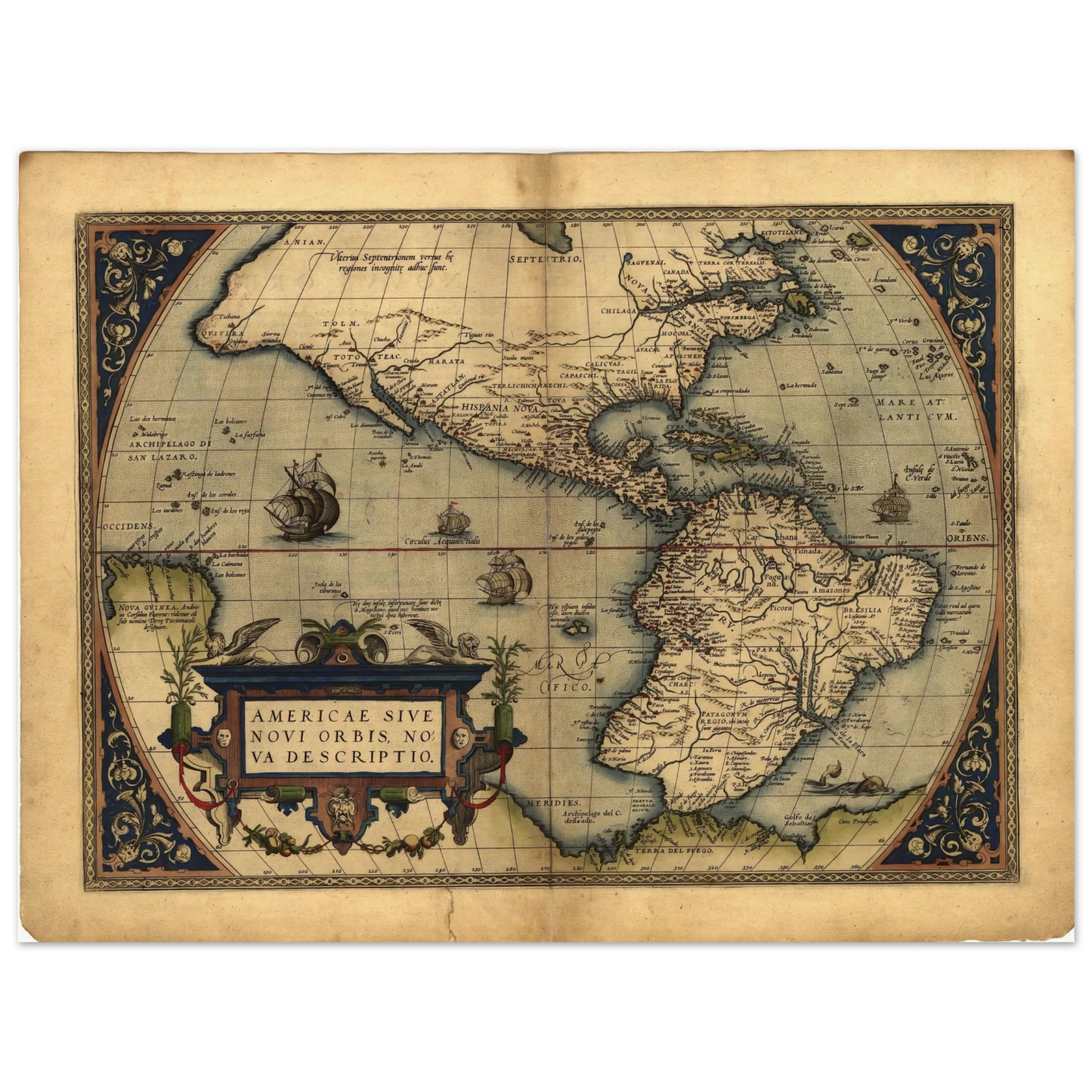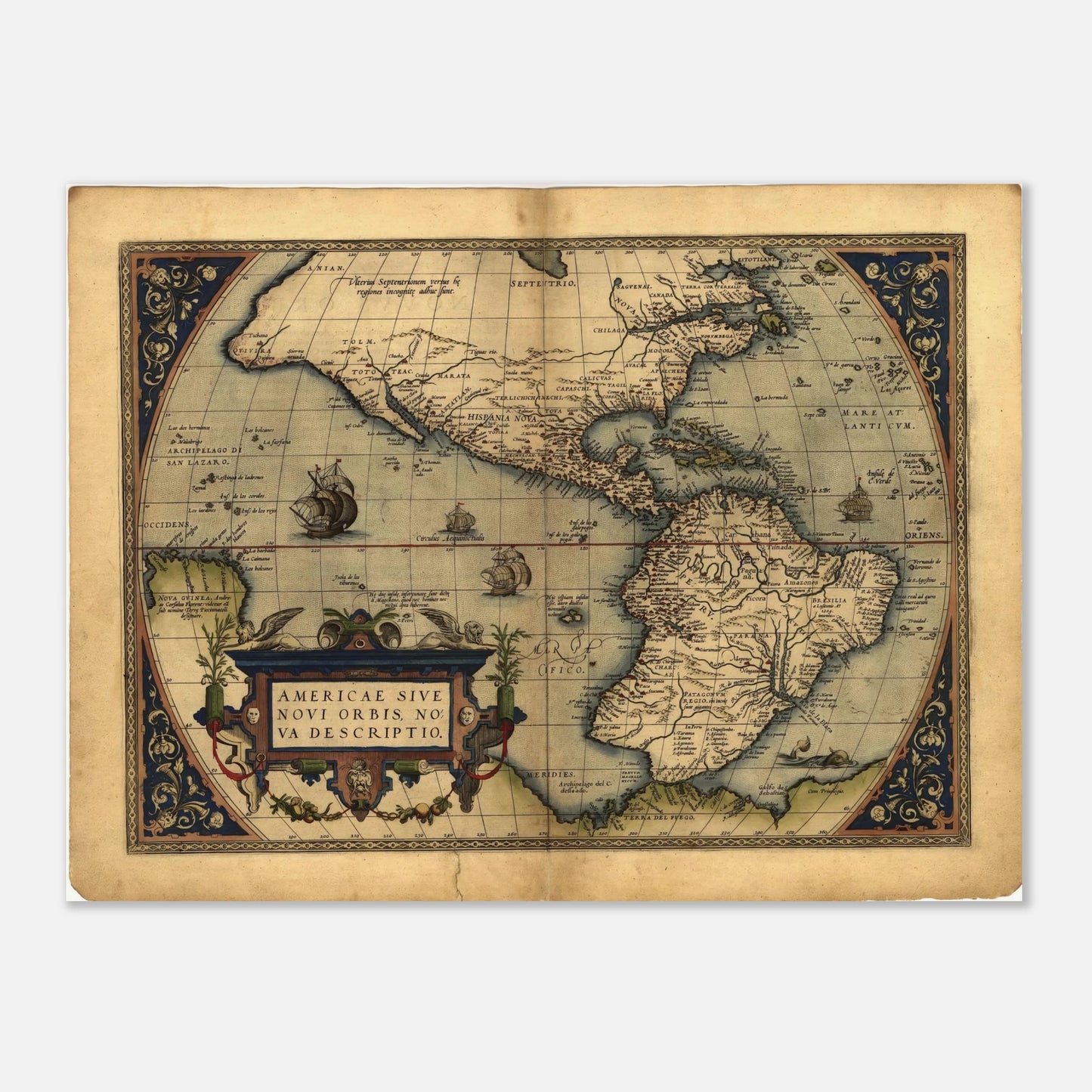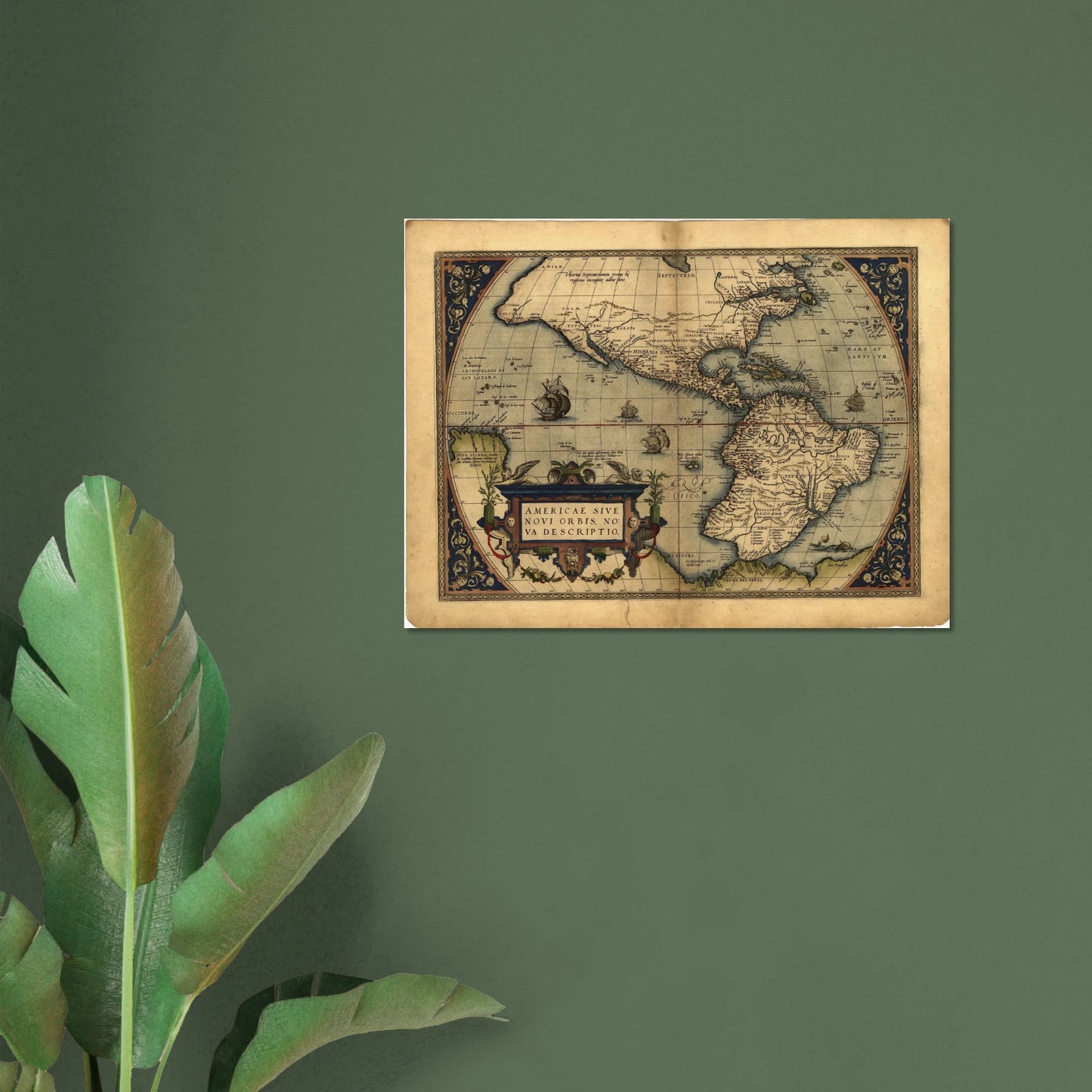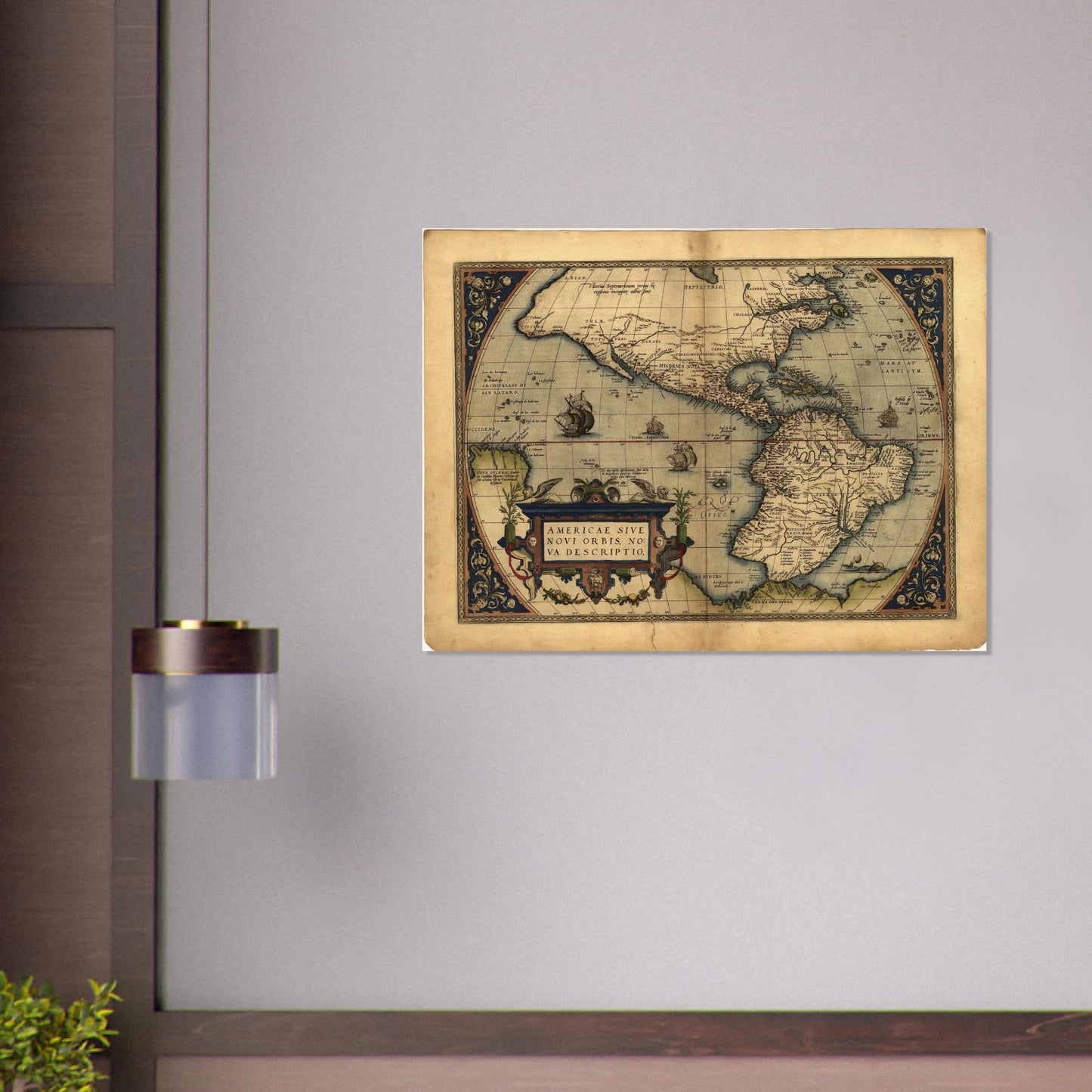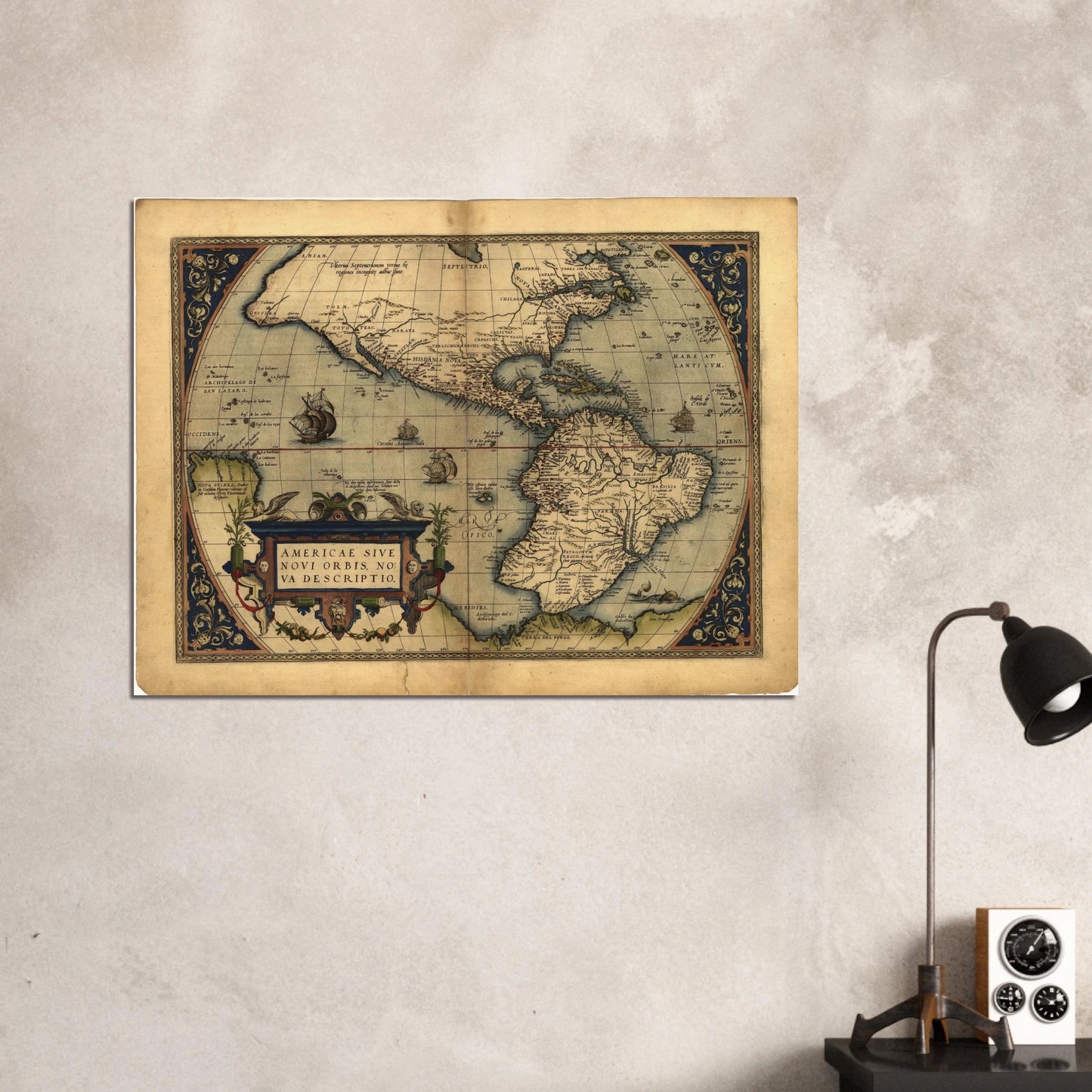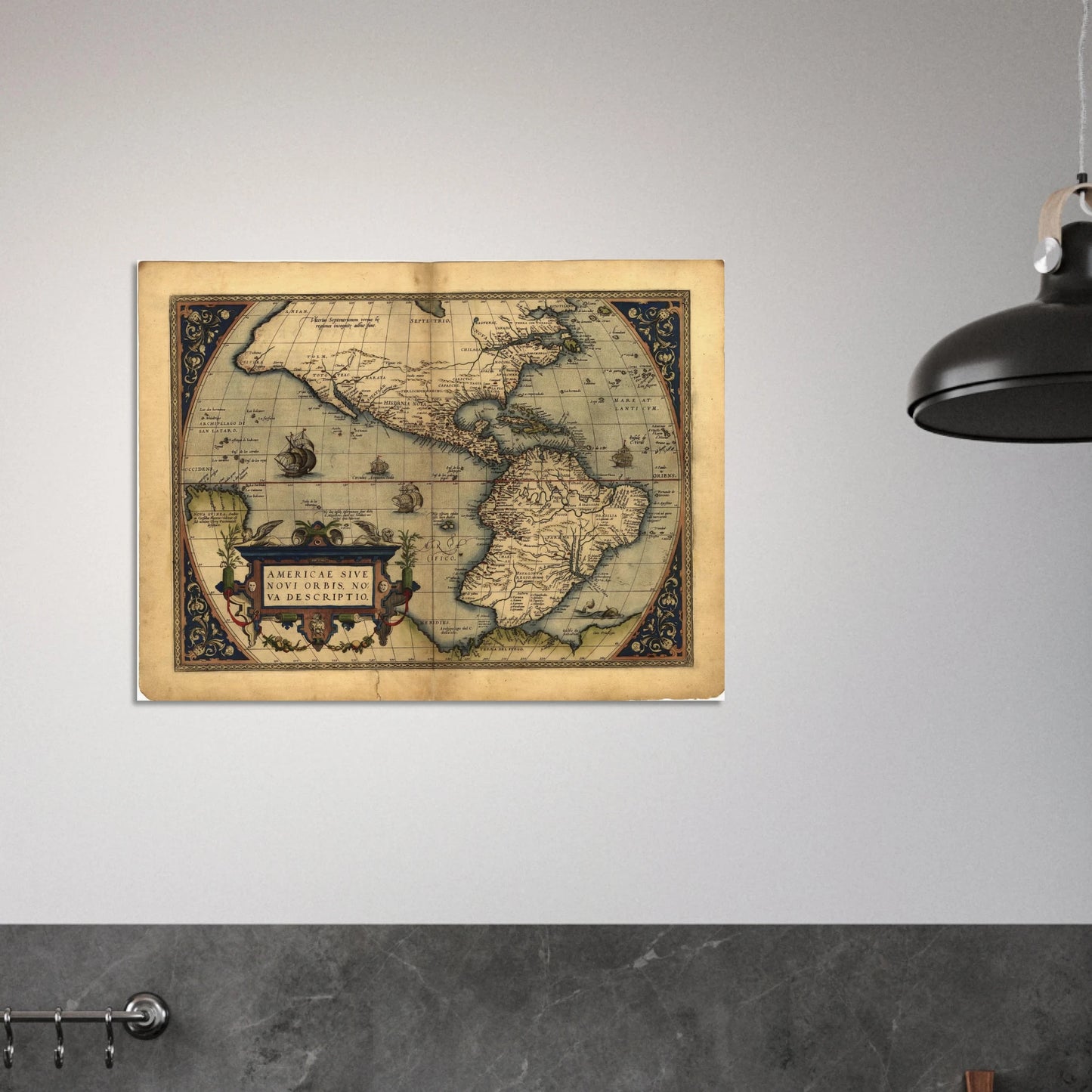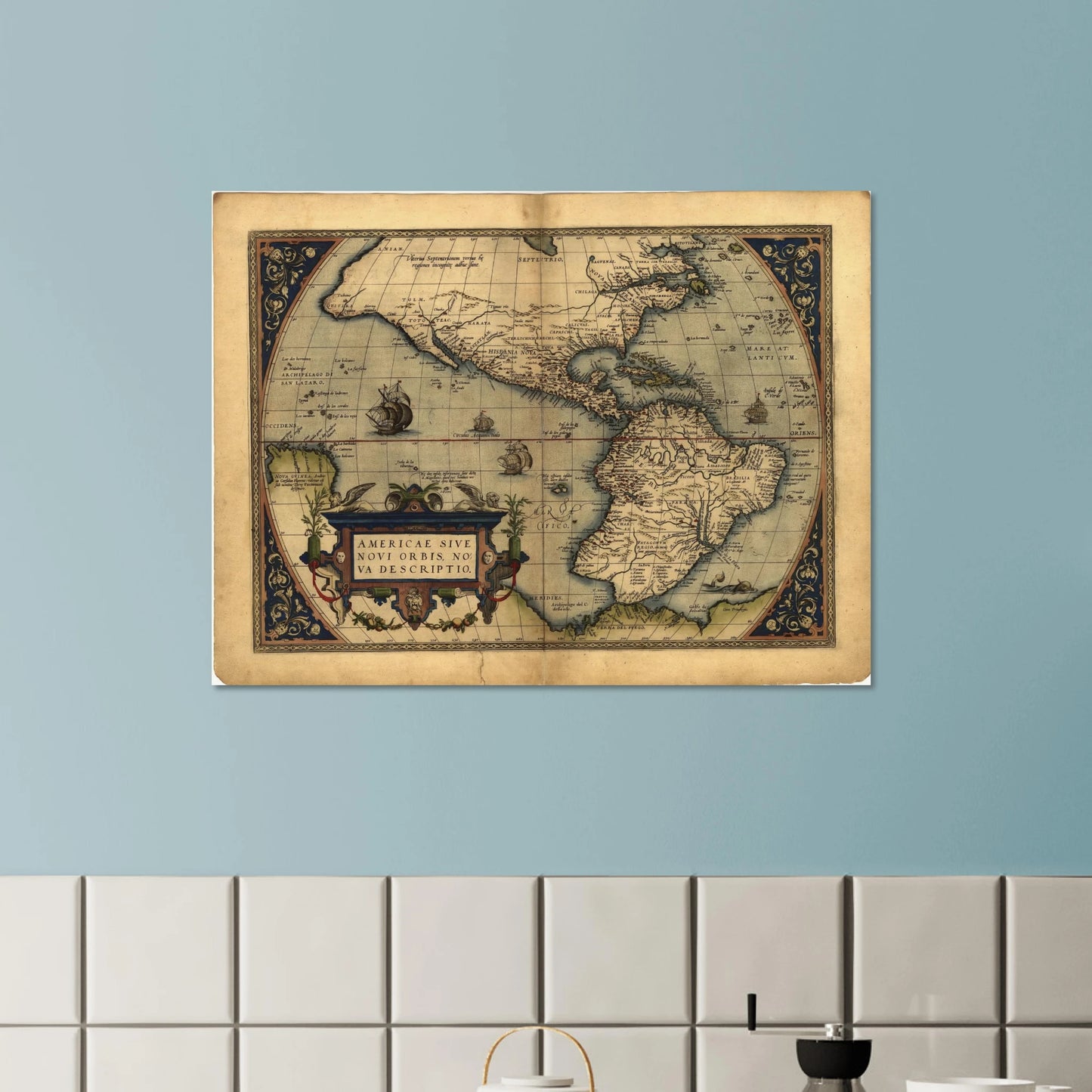Map of Americas from the First Modern Atlas (1570)
Map of Americas from the First Modern Atlas (1570)
Couldn't load pickup availability
Printed on museum-quality matte paper poster
This is a famous map titled "Americae Sive Novi Orbis, Nova Descriptio", which translates from Latin to “A New Description of America, or the New World.” It was created by Abraham Ortelius and first published in 1570 in Theatrum Orbis Terrarum — widely considered the first modern atlas.
📜 Historical Significance
1. Ortelius and the Birth of the Atlas
-
Abraham Ortelius, a Flemish cartographer, is credited with compiling and standardizing maps into a single book, effectively inventing the atlas.
-
This map is one of the earliest depictions of the Americas as a separate continent, and it reflects European geographic understanding shortly after the age of exploration.
2. Cartographic Features
-
The map merges artistic decoration (like sea monsters, ships, and ornate borders) with scientific mapping, a hallmark of Renaissance cartography.
-
It contains Latin names and notes based on explorer reports from the 16th century, including references to places like “Hispania Nova” (Mexico) and “Peru.”
-
The depiction of North and South America is distorted by modern standards but remarkably accurate considering the time.
3. Geopolitical Context
-
This map reflects the growing power of Spain and Portugal, both of which had claimed vast portions of the Americas following the Treaty of Tordesillas (1494).
-
The use of Latin and classical iconography underlines the European attempt to frame the New World within a Greco-Roman worldview.
4. Symbol of European Expansion
-
The map is not just a geographical tool; it’s a document of imperial ambition. It showcases the European "discovery" and colonization of the New World and is part of the ideological framework that justified colonization.
-
Notice the ships and mythical creatures — these emphasize both the danger and allure of exploration.
Printing Details:
Master's Edition archival paper, in off-white and uncoated, offers museum-quality for art enthusiasts seeking a luxurious way to enjoy world-class artworks:
- Paper Finishing: Matte, uncoated, natural white (off-white).
- Acid-Free: pH above 7 to prevent yellowing over time.
- Paper Weight: 250 gsm (110 lb), Thickness: 0.29 mm (11.4 mils).
- Sustainable Paper: FSC-certified paper for sustainability.
Learn about paper types and their unique textures and finishes here.
Share
